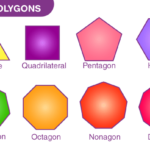Understanding Epidural Needles: Size, Types, and Applications
Introduction
Epidural needles are specialized medical instruments used primarily for administering anesthesia during childbirth and certain surgical procedures. Understanding the size and characteristics of these needles is crucial for healthcare professionals and patients alike. This article will explore the dimensions of epidural needles, their types, and their applications in medical practice.
What is an Epidural Needle?
An epidural needle is a long, thin needle designed to deliver anesthetic agents into the epidural space of the spinal cord. This procedure is commonly performed to provide pain relief during labor and delivery, as well as for certain surgical procedures involving the lower body.
Size of Epidural Needles
Epidural needles vary in size, typically ranging from 16 to 18 gauge. The gauge of a needle indicates its diameter; a smaller gauge number corresponds to a larger diameter. The choice of needle size depends on several factors, including the patient’s anatomy, the specific procedure being performed, and the anesthetic agent being used.
Common Sizes
- 16 Gauge: This size is often used for rapid administration of anesthetics and is typically larger in diameter, allowing for a quicker flow of medication.
- 18 Gauge: This is the most commonly used size for epidural anesthesia. It strikes a balance between ease of insertion and sufficient flow for anesthetic delivery.
- 20 Gauge: Occasionally used for epidurals, this size is smaller and may be chosen for patients with specific anatomical considerations.
Types of Epidural Needles
Epidural needles come in various designs, each suited for specific applications. The two main types are:
1. Tuohy Needle
The Tuohy needle is the most common type of epidural needle used in clinical practice. It features a curved tip that allows for easier navigation into the epidural space. The design helps minimize trauma to surrounding tissues, making it a preferred choice for epidural anesthesia.
2. Spinal Needle
While primarily used for spinal anesthesia, spinal needles can sometimes be used for epidurals. These needles are typically thinner and have a pencil-point tip, which can facilitate easier insertion into the spinal canal. However, they are less common for epidural procedures compared to Tuohy needles.
Applications of Epidural Needles
Epidural needles are primarily used in the following contexts:
1. Labor and Delivery
Epidural anesthesia is widely used during childbirth to provide pain relief. The anesthetic is injected into the epidural space, numbing the lower body while allowing the mother to remain awake and alert during delivery.
2. Surgical Procedures
Epidural anesthesia is also used for various surgical procedures involving the lower abdomen, pelvis, and legs. It provides effective pain management while allowing for a quicker recovery compared to general anesthesia.
Advantages of Epidural Anesthesia
Epidural anesthesia offers several advantages, including:
- Pain Relief: Provides significant pain relief during labor and surgical procedures.
- Awareness: Allows patients to remain awake and aware during procedures.
- Reduced Need for Opioids: Can decrease the need for systemic opioids, reducing the risk of side effects.
Disadvantages and Risks
While epidural anesthesia is generally safe, there are some potential risks and disadvantages, including:
- Complications: Rare complications can include infection, bleeding, or nerve damage.
- Limited Mobility: Patients may experience temporary loss of sensation and mobility in the lower body.
- Headaches: Some patients may experience post-dural puncture headaches if the needle inadvertently punctures the dura mater.
Table of Key Information
| Aspect | Details |
|---|---|
| Needle Sizes | 16, 18, 20 Gauge |
| Common Type | Tuohy Needle |
| Alternative Type | Spinal Needle |
| Primary Use | Epidural anesthesia for labor and surgery |
| Advantages | Effective pain relief, patient awareness, reduced opioid need |
| Risks | Infection, bleeding, nerve damage, headaches |
FAQ Section
Q1: What is the typical size of an epidural needle?
A1: Epidural needles typically range from 16 to 18 gauge, with 18 gauge being the most commonly used size.
Q2: What is a Tuohy needle?
A2: A Tuohy needle is a type of epidural needle with a curved tip, designed for easier navigation into the epidural space.
Q3: What are the applications of epidural needles?
A3: Epidural needles are primarily used for administering anesthesia during labor and delivery, as well as for certain surgical procedures involving the lower body.
Q4: What are the advantages of using epidural anesthesia?
A4: Epidural anesthesia provides significant pain relief, allows patients to remain awake during procedures, and can reduce the need for systemic opioids.
Q5: Are there any risks associated with epidural anesthesia?
A5: While generally safe, potential risks include infection, bleeding, nerve damage, and post-dural puncture headaches.
Q6: How does an epidural work?
A6: An epidural works by injecting anesthetic agents into the epidural space, numbing the nerves that transmit pain signals from the lower body.
Q7: Can anyone receive an epidural?
A7: While many patients are candidates for epidural anesthesia, certain medical conditions or anatomical considerations may preclude its use.
Q8: How long does epidural anesthesia last?
A8: The duration of epidural anesthesia can vary depending on the type of anesthetic used, but it typically lasts several hours.
Q9: Can an epidural be administered after labor has started?
A9: Yes, epidurals can be administered during labor, but the timing may depend on the progression of labor and the patient’s condition.
Q10: Where can I find more information about epidurals?
A10: For more detailed information about epidurals, you can refer to the CDC’s page on Epidural Anesthesia.
Conclusion
Epidural needles are essential tools in modern medicine, providing effective pain relief during childbirth and surgical procedures. Understanding their size, types, and applications is crucial for both healthcare providers and patients. By recognizing the advantages and potential risks associated with epidural anesthesia, individuals can make informed decisions regarding their pain management options.



